In yesterday’s post, I shared how I figure out what to teach during my guided reading groups. Today I’ll be sharing ideas for making your guided reading routine a bit more exciting. Because if you do it every single day in the exact same way, it can get a little tired, right?
 Establishing Routines In The First Place
Establishing Routines In The First Place
If we’re talking about changing up the routine a bit, a routine has to exist in the first place! At the beginning of the year, I think it’s essential to spend time teaching students how to be successful during guided reading.
This means teaching students how to work independently while you are meeting with a group, teaching readers how to listen and participate during guided reading, etc.
When you’re establishing your guided reading lesson format, here’s what it might look like:
- Warm-up/fluency items (letter sounds or sight words, rereading familiar texts or parts of a text for fluency
- Text introduction (discussing content, pre-teaching vocabulary, teaching a reading strategy)
- Reading the text (students read independently while you listen in to one student at a time)
- Post-reading conversation (addressing comprehension, re-visiting the teaching point or strategy from the text introduction, discussing how students could apply this learning to their independent reading)
This structure can vary a bit, but that’s generally what mine looks like. (If you teach Kindergarten or first grade, you might want to check out this post to learn what to do when your students can’t yet read a Level A text.)
Authentically Engage Students With Strong Book Introductions
Once your routines are in place and you’ve been teaching it for a while, Guided Reading can get a bit stale. But it’s still super important. And I absolutely don’t recommend using the time to have students complete worksheets or activities that involve cutting, pasting, and gluing. These minutes are precious – students definitely need to spend them reading (and possibly doing a little bit of writing), not working on activities that they could complete independently.
So how do you engage students, then? I think an important first step is making sure that you are bringing enthusiasm to the table. Read each book carefully before you teach a lesson on it. Think about what you would notice and get excited about if you were a student. Then, create an engaging book introduction that gets students interested in the text, without giving away the ending or the most important information.
If you want to “spice up” your book introduction, you could bring a photo that’s related to the text, or even have students view a (very very short) video clip related to the topic – particularly if it’s a nonfiction text. Getting students interested in the book will significantly impact their engagement in the guided reading lesson.
Vary the Ways In Which Students Respond to the Text
In addition to developing engaging book introductions, you can also change up the routine by varying the ways in which students respond to the text. Here are a few different ideas:
- Give students complete responsibility for the post-reading discussion. This a great break from the “teacher-asks-questions-and-students-answer” routine AND it gives students more ownership of the comprehension conversation. You might choose a discussion leader and write down a question or two to guide the conversation. Then, sit back and listen to students discuss, taking notes and supporting students when necessary. (Of course, you’ll need to spend time teaching students how to do this before completely relinquishing control! Giving students sentence starters is a helpful support when you’re working toward this.)
- Keep things playful with a game. When comprehensions questions are coming from a spinner, cube, or other game instead of just the teacher, a discussion instantly becomes more fun! My guided reading packs and bundles include printable comprehension activities like the ones featured below! They’re quick to put together, fun, and promote meaningful conversations.
- Have students fill out an interactive bookmark during/after reading. Doing some quick writing can help students prepare for the post-reading discussion. If you’re working on character traits, for example, have students fill out one of the bookmarks featured below (from my 2nd-3rd grade Reading Workshop Toolkit). They can place the bookmark in the text and then easily turn back to that page when they are ready to discuss the main character’s traits (and corresponding text evidence).
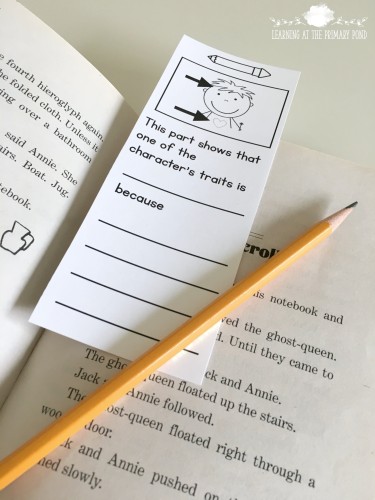
- Give students a post-reading writing assignment to complete on their own. Create an engaging prompt, and introduce it to students at the very end of the lesson. Choose a high-interest topic that also requires students to respond with text evidence (i.e. “Would you want to be Character A’s best friend? Why or why not?” or “Should tigers be kept in zoos? Why or why not?”). Have students talk briefly about how they would answer the question. Then, let them take the guided reading books back to their seats and respond to that question independently, in writing. The next time the group meets, students can bring their responses back and share them with a partner.
- Have students look for a word pattern they’re studying. When we do word study with students, we want them to be able to apply that knowledge to reading and writing. From time to time, I have students look for a particular word pattern within a text. I never devote a ton of time to it during guided reading (because students can do this independently), but it’s an option for students who finish reading early.

Organize for Engagement
In the past, whenever I fell into a repetitive pattern during guided reading, it was often due to a lack of organization. I’m not a disorganized person at all, but when I planned my guided reading lessons, I tended to grab whatever activity I could think of that would meet my students’ needs. Unfortunately, that often meant that I used activities over and over and over again!
But now that I’ve organized all my materials and resources into my leveled guided reading packs, I no longer have this issue! I now have specific activities set aside for each guided reading level. There’s a lot to choose from at each level – and every time students move up a level, I have a whole new bank of resources to use with them!
Click on any of the images below to check out my guided reading bundles (you can also find individual levels and other bundle options HERE):
Conclusions
Once your Guided Reading routines are firmly in place, try changing things up once in a while to maintain students’ interest. To review, you can:
- Work to make your book introductions even more engaging
- Try out different ways for students to respond to and engage with the text
- Organize your materials or use my guided reading leveled packs so that you have plenty of activities to choose from at each level
Are there any ideas that you would add to this list? How do you keep students engaged in your guided reading lessons throughout the school year? Please comment below – I’d love to hear from you!

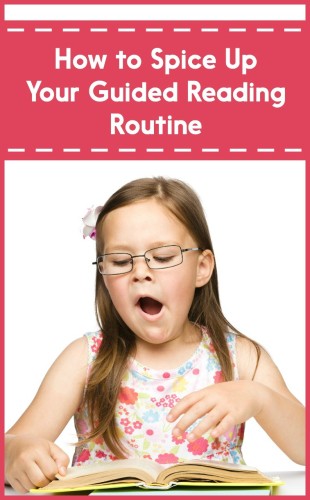 Establishing Routines In The First Place
Establishing Routines In The First Place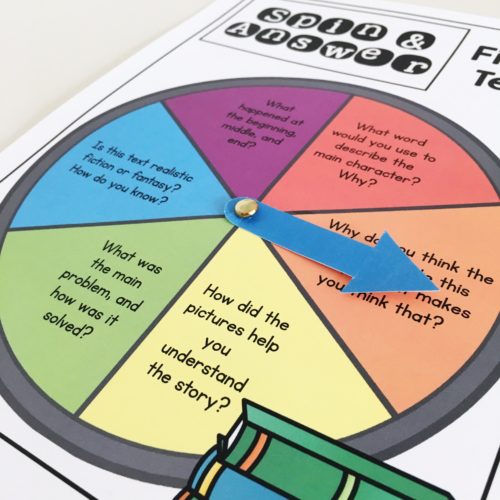

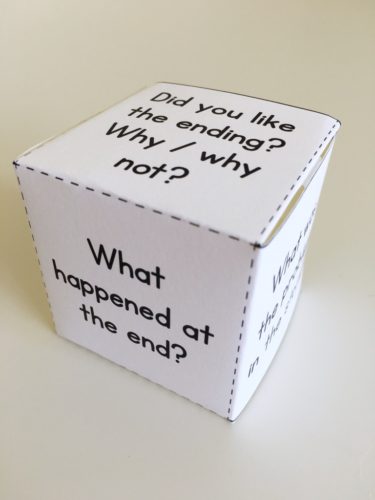

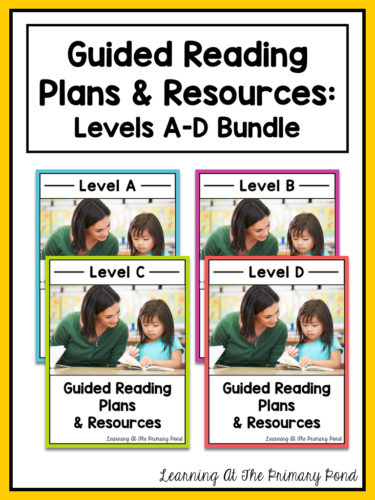
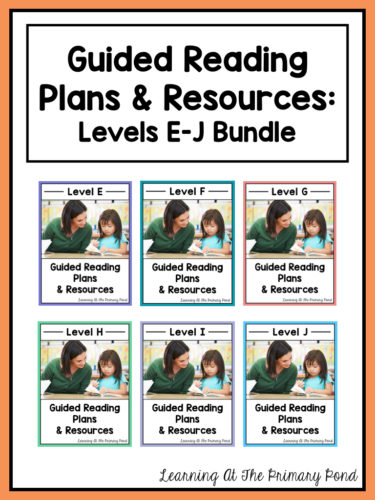
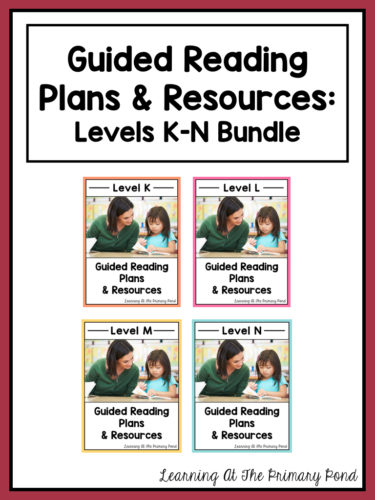
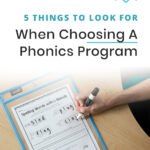
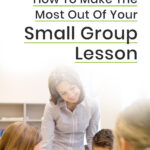
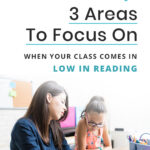
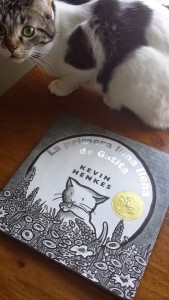
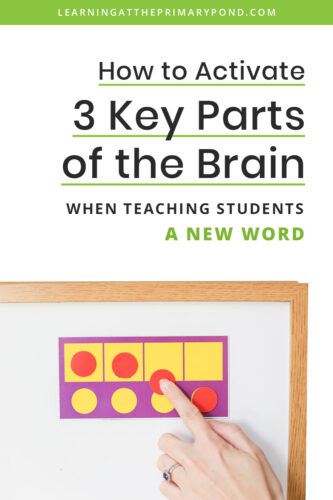






I usually read the book first then I make cards with the words and each syllable is a different color. So we practice reading them before they see them in the book. I rotate, sometimes I do the cards with the high frequency words and other times with the harder words. I also have them look at the pictures before we begin to read the book so they can have some idea of what the book will be about and they get to discuss it with their group. They seem to enjoy guided reading!
Love it! For some reason using colors for decoding seems to really work with kids. I have had a lot of success with getting K-1 students to read words using magnetic letters. Thanks for sharing your ideas!!
Alison
Love this post! I recently started having my little readers lead our discussion after reading each day- each group has a reading leader of the week. My kiddos are LOVING it. Of course, I am helping them come up with questions at this point, but overall it has definitely given them that ownership piece, so I love it too. One of these days I’ll blog about it… 🙂
Aylin
Thanks Aylin!! You should totally blog about it. 🙂 It’s so easy to just be in control of the whole conversation, but it really is so valuable for them to take charge.
Alison